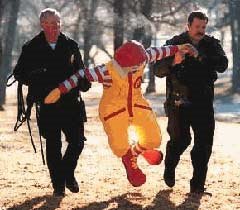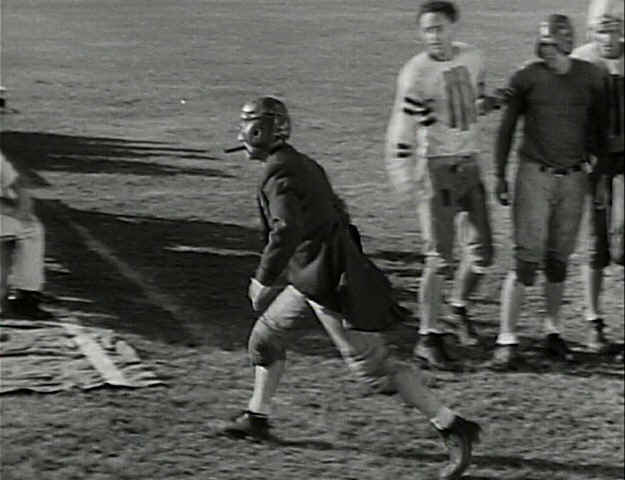There are many diets, and most don't work. Some try to get you to lose weight too quickly, leading to a yo-yo effect as you regain all the weight you lost (and maybe a bit more). Others encourage you to eat an unbalanced and unhealthy mix of foods. There are also magic diet pills and herbal supplements that perhaps put your health at risk.
Many of these diets try to convince you of their power through pseudo-scientific mumbo jumbo about "good" and "bad" nutrients and unproven claims to change your metabolism to burn more fat.
But the real goal of these diets is to produce income for their creators.
The key to dieting is not losing weight -- most diets will allow you to shed pounds -- but in keeping the weight off after you've lost it. Fad diets that require major changes in behavior won't succeed in the long run. Diets that make only minor changes in behavior can be continued long-term, making it easier to maintain the weight loss.
The simple diet described below is based on sound principles of weight control. It is just plain common sense that if you eat less and exercise more, you'll lose weight. The diet described below helps you achieve this by gradually changing your habits, leading to sustainable lasting results. It won't be as easy as popping a few pills, but you can do it. Judge for yourself whether you think this diet will work for you.
Cutting 100 calories a day from your diet will let you lose about 10 pounds a year. That's just one can of soda a day. (The mathematics is straightforward. 100 calories per day multiplied by 365 days in a year is 36,500 calories in a year. To lose a pound, you have to burn about 3,500 calories. So that means that a can of soda a day is the equivalent of 36,500 calories divided by 3,500 calories per pound, or 10.4 pounds.)
Take it Slow
It took you a long time to gain all that weight. It is going to take you just as long to lose it. If you try to lose it overnight, you will end up regaining it just as quickly. Starving yourself doesn't work on a long-term basis. Your goal should be to find a way to lose the weight in a slow but steady manner. Such a diet will be sustainable, allowing you to keep the weight off permanently.
Generally, if you want to lose weight, you should aim to have the difference between your calorie consumption and the calories you burn be around 1,500 calories a day. But a lot depends on the level at which you are starting.
Trying to lose several pounds a week may be overdoing it. A better goal is half a pound to a pound a week. This is achievable and sustainable. It may take you more than a year to get back to a healthier weight, but you will reach it if you take it slow.
Small changes are the key to sustainability. Take the dieting one small step at a time. Make a small change, get used to the change, and then make further changes, instead of trying to get from point A to point B all at once.
You should also plan on using a combination of diet and exercise to control your weight. Doing one without the other is unlikely to be successful.
Track your Weight
Weigh yourself on a daily basis, and keep a log of your weight. One of the best ways to do this is in a spreadsheet program like Microsoft Excel, where you can graph the results and see trends.
Tracking your weight gives you feedback. It makes you aware of how much you weigh, and whether you are gaining or losing. Just awareness of your weight may make it easier to control your weight. If you see that you're continuing to gain weight, you can make further small changes.
Use Portion Control
Counting calories can help you lose weight, but most people find portion control to be more effective. Portion control allows you to eat the foods you like, just a little less of them.
You know how much food you usually put on your plate, and whether you go back for second and third helpings. Just try to cut back the amount of food you eat by a little each time. If you help yourself to multiple servings, try eliminating one of the helpings, or reducing the amount of food you put on your plate each time.
For example, instead of eating a whole sandwich, try eating a half sandwich, and save the rest for tomorrow's meal. (Or toss it. It may seem like a waste to throw away food, but it's better for it to go to waste than for it to go to your waist.) Eat just a single bowl of cereal, instead of two or three. Eat that calorie-rich dessert every other day, instead of every day. Instead of a 20-ounce bottle of soda, drink a 12-ounce can.
Some people find it helpful to serve themselves on a smaller size plate, such as a salad plate instead of a dinner plate. Most people have a tendency to fill up their plate with food, treating it as a target, so if you use a smaller plate, there'll be less food on your plate.
Don't eat out of the package or with the refrigerator door open. Mindless grazing like this makes it difficult for you to appreciate just how much you are eating. Often, you'll be eating for the sake of eating and not because you are hungry. Instead, put the food you want to eat on a plate, and sit down at the table to eat it
By seeing the total amount of food you are consuming all at once, instead of in small impromptu snacks, you will naturally inhibit your consumption, eating a little less.
Remember, your stomach is about the size of your first. If you eat more than two fistfuls of food at each meal, you're probably eating too much.
When you start to use portion control, start slow. Don't eliminate too much at once. Cut back a little once a week, and then try to maintain that level for a while before you cut something else. Try to reduce your calorie intake gradually, not suddenly.
Some people find it helpful to have two small planned snacks a day, in between the meals.
Make Substitutions for Calorie-Rich Food
Portion control can only work so far. If you're eating creme-filled donuts, inhaling ice cream sundaes and drinking soda every day, you may be reaching your calorie limit in just one little snack.
It helps if you keep a diary for a day or two of everything you normally consume. Then, review the diary to see how many calories are associated with each item. Don't forget that the nutritional information is given in terms of servings, and consuming the entire package often represents several servings. So multiply the calorie count per serving with the actual number of servings.
Reviewing the list, you'll see several items with very high calorie counts. Try substituting alternatives that have lower calorie counts and are more filling, such as fruits and vegetables. Substitute pretzels for potato chips, fruit for candy bars, fish or chicken for red meat, a small cookie or two for a creme-filled donut and ice cream, skim milk instead of 2% milk and 2% milk instead of whole milk, and a glass of water for a can of soda. (Frozen yogurt is not a good substitute for ice cream, because frozen yogurt is almost as bad these days.)
Also make substitutions for your condiments: mustard instead of mayo, jam or cream cheese instead of butter or margarine, salsa instead of cheese dip, and fat-free dressing instead of creamy dressing.
Try to avoid fried foods, since such foods stimulate appetite and make it harder to stop eating when you are full.
Drink Water
Water has no calories. When you feel the urge to eat a snack or drink a can of soda, drink a glass of water first. Often you eat when you don't really feel hungry, but have gotten in the habit of snacking. If you drink a glass of water first, you'll start to substitute a new and healthier habit. Eventually, the glass of water will be enough.
Water will cause your stomach to feel full sooner without any calories or carbohydrates. Drinking a full glass of water at least 15 minutes before any meal can help you lose weight.
When eating a meal, take frequent sips of water. The water will make you feel full, causing you to eat less.
Exercise
The experts encourage you to exercise for half an hour three times a week. It is actually better to exercise for half an hour to an hour a day. But most people don't exercise for even an hour a week, so something is better than nothing. It is especially important to exercise if you have a sedentary lifestyle.
Just as you are cutting your calorie consumption gradually, you should start exercising gradually. If you overexert yourself, you won't be willing to continue with the exercise regimen.
A key to exercising is to find something enjoyable about the exercise. This can range from a type of exercise you enjoy (e.g., walking your dog) to exercising with a friend (e.g., taking a walk with your spouse). Some people find it helpful to exercise in front of the TV, since that will distract you from the fact that you're exercising.
For example, I have an exercise bike and treadmill in front of the TV, and watch one or two DVDs each time I exercise. I currently exercise 2-3 hours a night. I started off with just 15 minutes of exercise per night, and built up to my current level over the course of three years. As soon as I stopped exercising, I would pause the DVD player. I only watch TV when I'm exercising, so if I want to watch TV I have to exercise.
Eat a Balanced Diet
Most people eat too much meat, eggs, salt, cookies, cake and ice cream, and too little fruit, vegetables and whole grains like rice. While you gradually cut calories, you should also try gradually shifting yourself into a more balanced, healthier diet. The key, of course, is to make the changes gradually through portion control. Cutting out the foods you love suddenly will cause you to drop the diet. You don't need to eliminate them entirely, just eat a little less of them.
Often it helps to focus on adding more fruit and vegetables to your diet, and to eat them before the rest of your meal. Substitute an apple or orange for one of your snacks. This will gradually cause you to eat less of the less healthy foods, by filling your stomach.
If you don't particularly like apples or oranges, try other fruits. I happen to like pears and mandarin oranges. Organic fruit and vegetables that aren't force-ripened also taste better.
Don't try to make excuses that a slice of apple pie or fruit cake is a serving of fruit. Pies and cakes are mostly sugar.
If your diet is unbalanced, you should take a daily multivitamin in addition to gradually restoring balance to your diet.
Control When You Eat
Put together a schedule of when you will eat. This can include the times of breakfast, lunch and dinner, and one snack in between each meal. Try sticking to the schedule. If you get the urge to eat at an unscheduled moment, look to see how long it is until the next snack or meal, and try waiting until then. (A good schedule is 7:00 am breakfast, 9:30 am snack, 12:00 pm lunch, 3:00 pm snack, 6:30 pm dinner.)
Whatever you do, do not snack after dinner.
When you eat, eat more slowly, savoring the flavor. It takes about 20 minutes for you to feel full after eating, so if you eat more slowly, you will end up eating less food. Try to avoid inhaling your food. Chew your food thoroughly, instead of swallowing it whole.











No comments:
Post a Comment